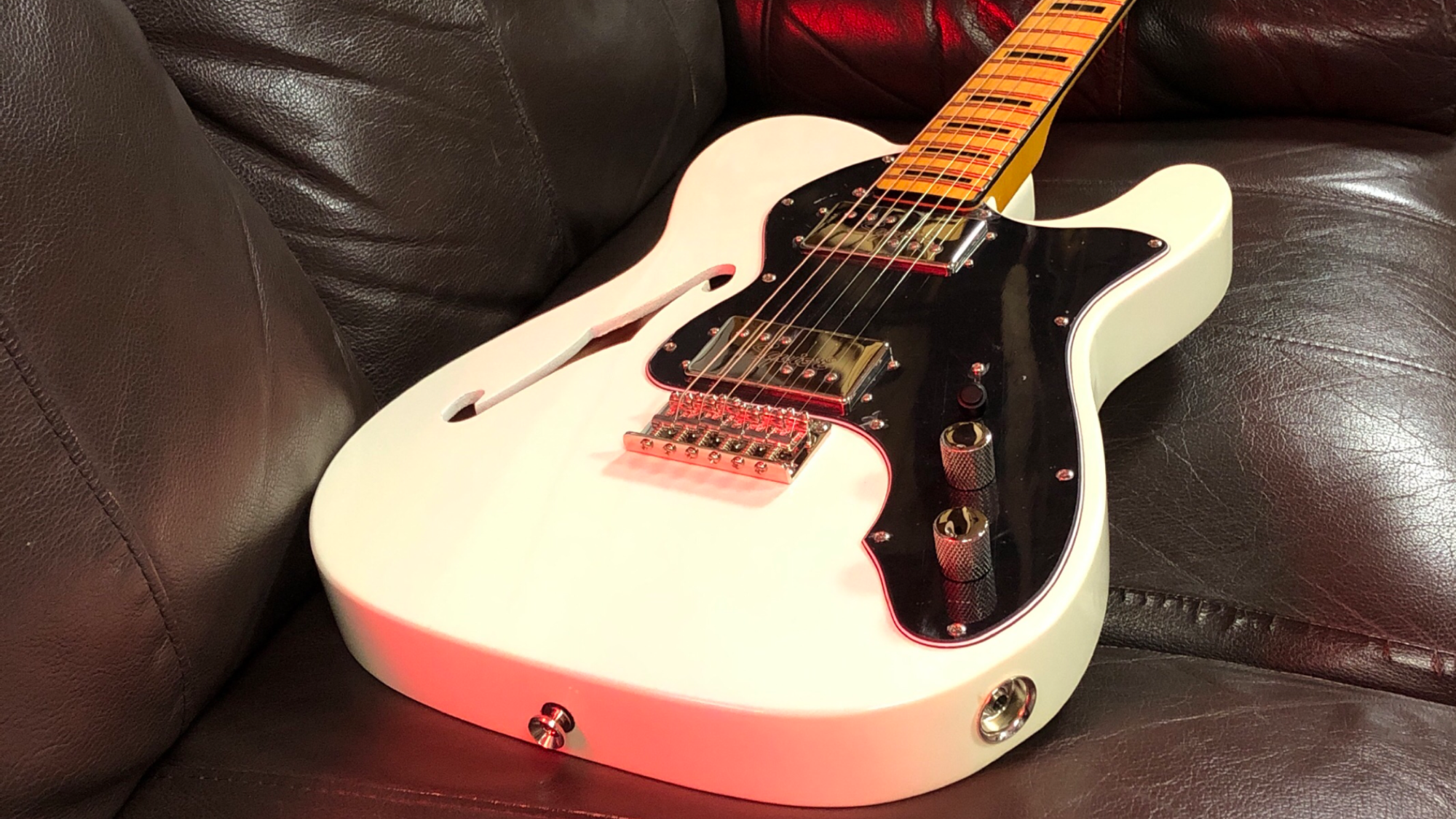Guitar World Verdict
If you are on the hunt for a lightweight, versatile guitar for a modest price, this Squier Thinline Telecaster should be at the forefront of your considerations. The array of tones achievable from the Wide Range humbuckers is fantastic, especially when taking command of the onboard tone controls – it’s a certified genre chameleon. Its effortless playability, surprisingly sturdy hardware and eye-catching, boldly finished semi-hollow body set this Telecaster apart. The matching black bound neck and block inlays complete the package, making it a top contender in its class.
Pros
- +
Incredibly versatile tones
- +
Robust hardware for the price
- +
Impressive finishing
- +
A subtle acoustic resonance
Cons
- -
Limited finish options
- -
Gloss neck finish may be too thick for some
You can trust Guitar World
Many out there consider the Telecaster as the pinnacle of electric guitar craftsmanship. Its straightforward, concise design offers a no-frills, reliable instrument that has stood the test of time. So, upon discovering the semi-hollow Thinline Telecaster, you may be asking, why did Fender feel the need to radically change its construction in the late ‘60s? The answer is due to their stockpile of ash being so darn heavy! We’re talking about Gibson Les Paul heavy.
To address this, Fender enlisted semi-hollow guitar guru Roger Rossmeisl, formerly of Rickenbacker, to reimagine the Telecaster as a lighter, Thinline version. One that wouldn’t leave your shoulder feeling like you had just faced the South African rugby team in a scrum after a band practice.
‘72 saw the second variant of the Thinline and featured the newly designed Wide Range humbucker, created by none other than humbucker royalty Seth Lover. Pairing Rossmeisl’s semi-hollow construction and Lover’s Wide Range humbucker had the potential of setting the guitar world on fire. However, it wasn’t to be and those embers fizzled out into discontinuation by ‘79. Today, a Fender Thinline with ‘buckers is going to set you back four figures, making it out of reach for most of us. Enter Fender’s little sibling.
Forever the budget-friendly champion, Squier has taken inspiration from the variant two Thinline. This Tele is part of Squier's Classic Vibe series, which is focused on crafting vintage-vibe instruments with era-accurate headstock markings, vintage-inspired hardware and tinted glossy necks. No need to spend countless hours in smoke-filled bars for that charming nicotine tint! Ah, the good ol' days.
Sound
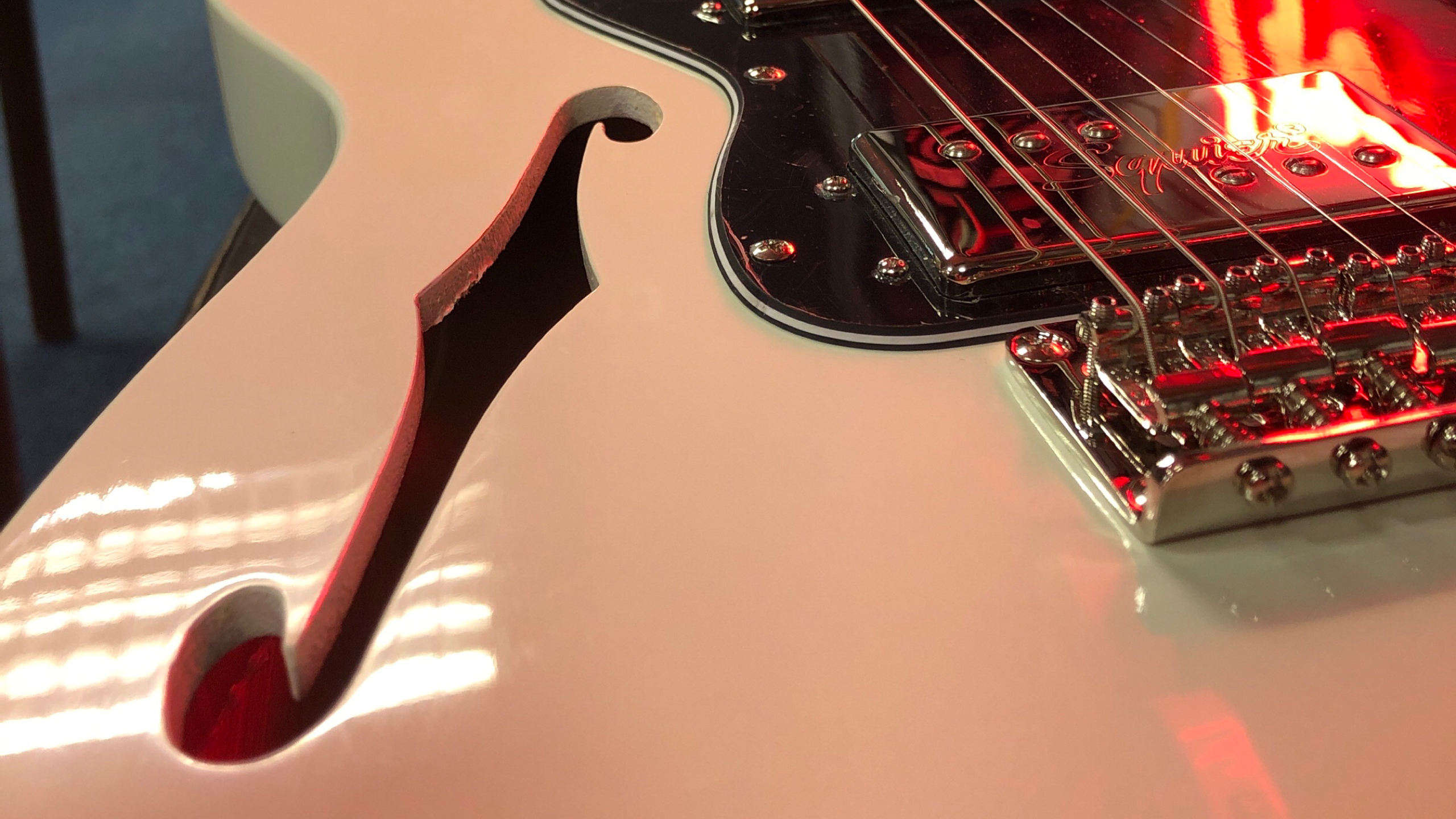
Sticking to the heart of the original, this Thinline is equipped with a pair of Fender-designed Wide Range humbuckers. While playing the guitar through a Fender Hot Rod Deluxe, these pickups surprised us. They are significantly more articulate than a traditional ‘bucker, even the neck pickup’s high-end frequencies shine through with pride. That stereotypical humbucker murkiness is but a distant relative compared to this Thinline's bright tone.
Those familiar with the clarity of a single coil will feel right at home with this Classic Vibe, although there is a little extra humbucker oomph if you need it. Dialing back the treble transforms this Squier to a sound more akin to a traditional ‘bucker. Throw overdrive into the mix and it can cover everything from glassy cleans to gritty hard rock crunch.
Cycling through to the bridge pickup and some Telecaster twang starts to shine through. We achieved a pleasing chicken pickin’ tone by introducing an MXR Dyna Comp compressor and dialing our Deluxe’s treble to 8. However, compared with our Player Plus Telecaster’s bridge pickup, there is a lot less bite, producing a very rounded, dare we say, mellow tone.
This is perhaps due to the pickups being mounted to the pickguard, as opposed to a traditional Tele bridge plate, losing a little bit of that metallic zing in the process.
If the Wide Range humbuckers are the heart of the Thinline, its semi-hollow body is the soul. There is an acoustic resonance and breathy quality to the guitar’s sound, a hallmark of semi-hollow guitars.
Playability
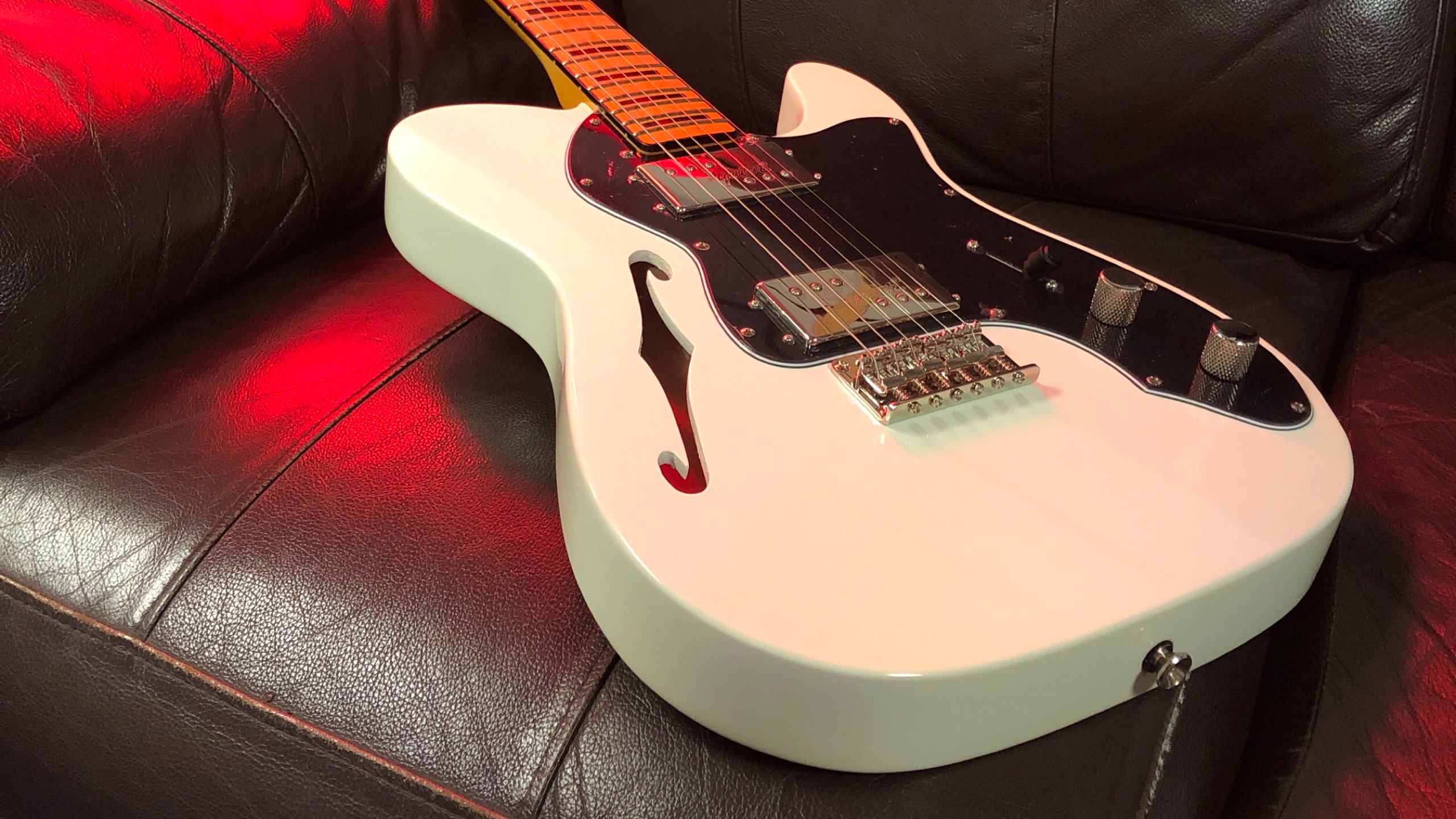
Instead of traditional ash, Squier has opted for 'soft maple' for the body and our model weighs in at 7.2 lbs. Comparing that to the 8.4 lbs of our Player Telecaster, this is still an excellent option if you are after a lighter guitar to take to those four-hour wedding gigs.
Moving to the maple neck, this Thinline sports a familiar “C”-shape profile with a 9.5” radius. For us, it is a perfectly balanced profile and radius, which felt like second nature the moment we picked it up.
While the Classic Vibe’s trademark tinted glossy neck doesn’t bother us, we do realize it may be a little thick and sticky for some. The fret ends on our example are neatly finished and devoid of any sharpness common in guitars of this price range. The guitar's exceptional setup contributed to its effortless buttery-smooth playability without additional tweaks.
Looks
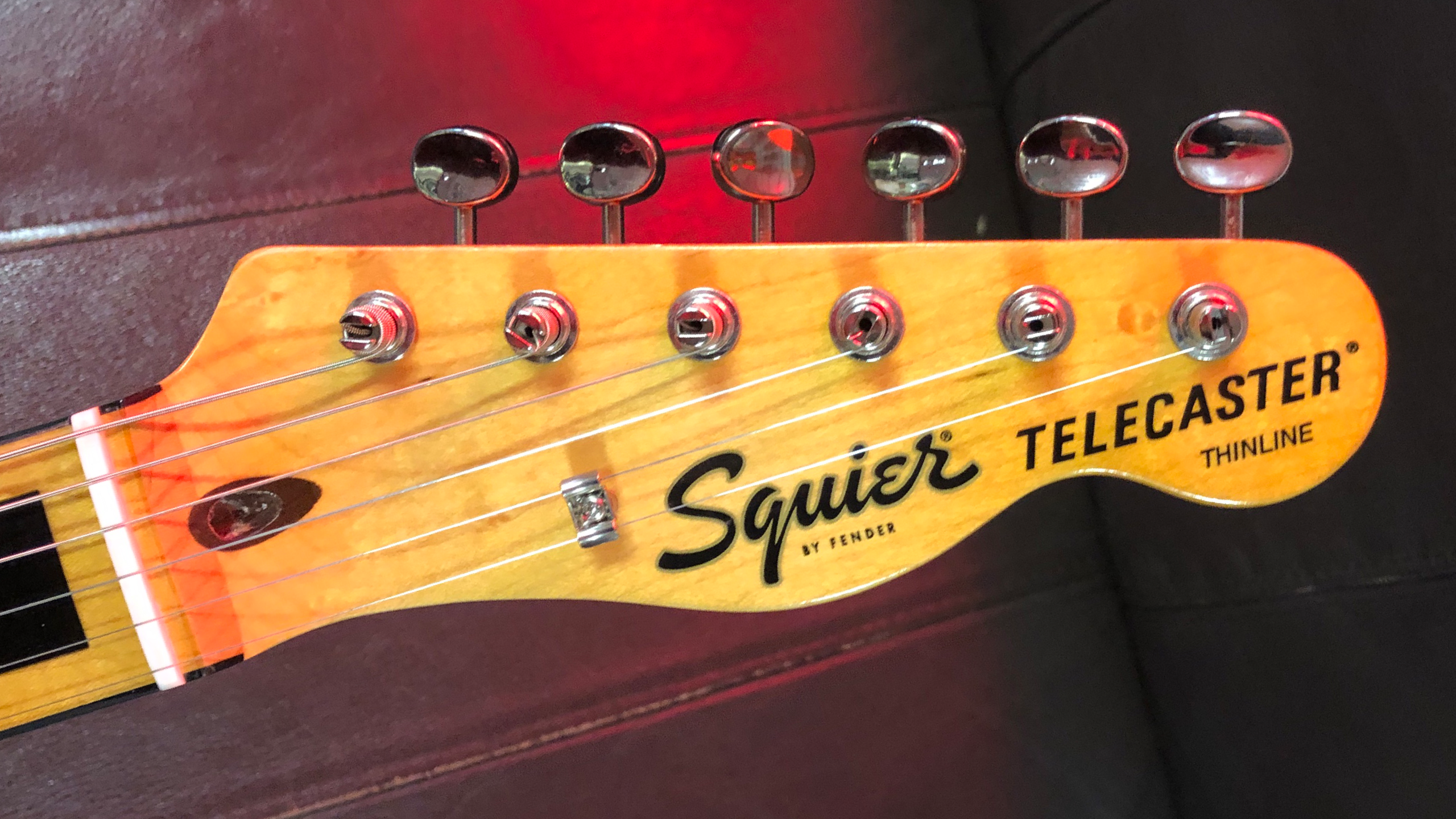
So we’ve established that the Classic Vibe Thinline sounds and plays great, but how does it look? Let us say, our model isn’t for the faint of heart. The monochrome combination is catapulted into rock ‘n’ roll hedonism by the swagger of black block inlays and matching binding. We must admit, the bold look is right up our street, but if it’s a bit too much for you, there is a more muted Natural and 3-Tone Sunburst variation available.
Onto the headstock, which adorns the golden border ‘70s CBS-style logo and is a satisfying nod that vintage aficionados will appreciate. The vintage stylings are carried through to the six-in-line button key tuning pegs, of which tuning accuracy and robustness are incredibly impressive. Using inexpensive hardware is a compromise Squier sometimes has to take to keep costs down, but in this instance, the stock pegs punch well above its modest weight.
We were also delighted with the guitar's finishing quality. Our model had no issues like neck pocket cracks, over-applied finishing or wood imperfections. This results in a guitar that not only plays superbly but also boasts an appearance far exceeding its affordable price.
Final verdict
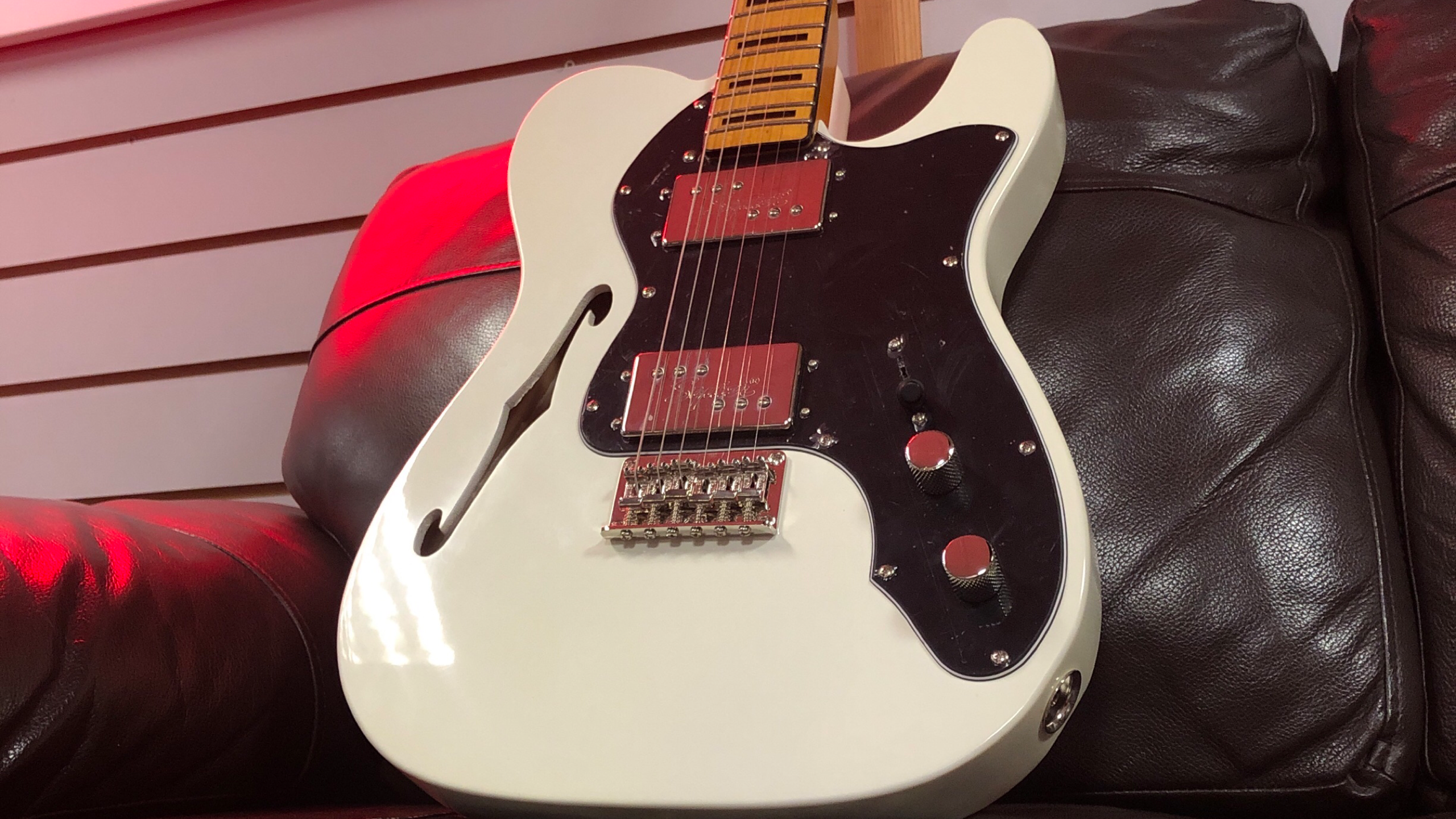
This ‘70s Thinline doesn’t let Squier’s reputation down and we are very impressed with this semi-hollow offering. From a neat finish to versatile tones and a bucket load of style, this Thinline Telecaster is one of the best electric guitars under $500 on the market today.
This guitar is a fantastic choice for those seeking an unconventional Fender model without a four-figure price tag. Its affordability also makes it accessible to beginners looking to upgrade to a stylish, versatile six-string.
Specifications
- Body Material: Soft Maple
- Body Finish: Gloss Polyurethane
- Neck Material: Maple
- Neck Shape: "C" Shape
- Scale Length: 25.5"
- Fingerboard Radius: 9.5"
- Frets: 21 Narrow Tall
- Pickups: Fender Designed Wide-Range Humbucking
- Bridge: 6-Saddle Vintage-Style Strat Strings-Through-Body Hardtail
- Contact: Fender
Ross has been a music lover and guitar player since the age of 8. He has spent the five years since graduating from university working in music retail, selling guitars, amps and more. Ross is particularly interested in electric guitars, pedals and amplifiers and his current rig includes a trusty 2009 American Standard Stratocaster and Vox AC30S1 with a few Walrus Audio and Way Huge pedals in between.
“It holds its own purely as a playable guitar. It’s really cool for the traveling musician – you can bring it on a flight and it fits beneath the seat”: Why Steve Stevens put his name to a foldable guitar
“Finely tuned instruments with effortless playability and one of the best vibratos there is”: PRS Standard 24 Satin and S2 Standard 24 Satin review
